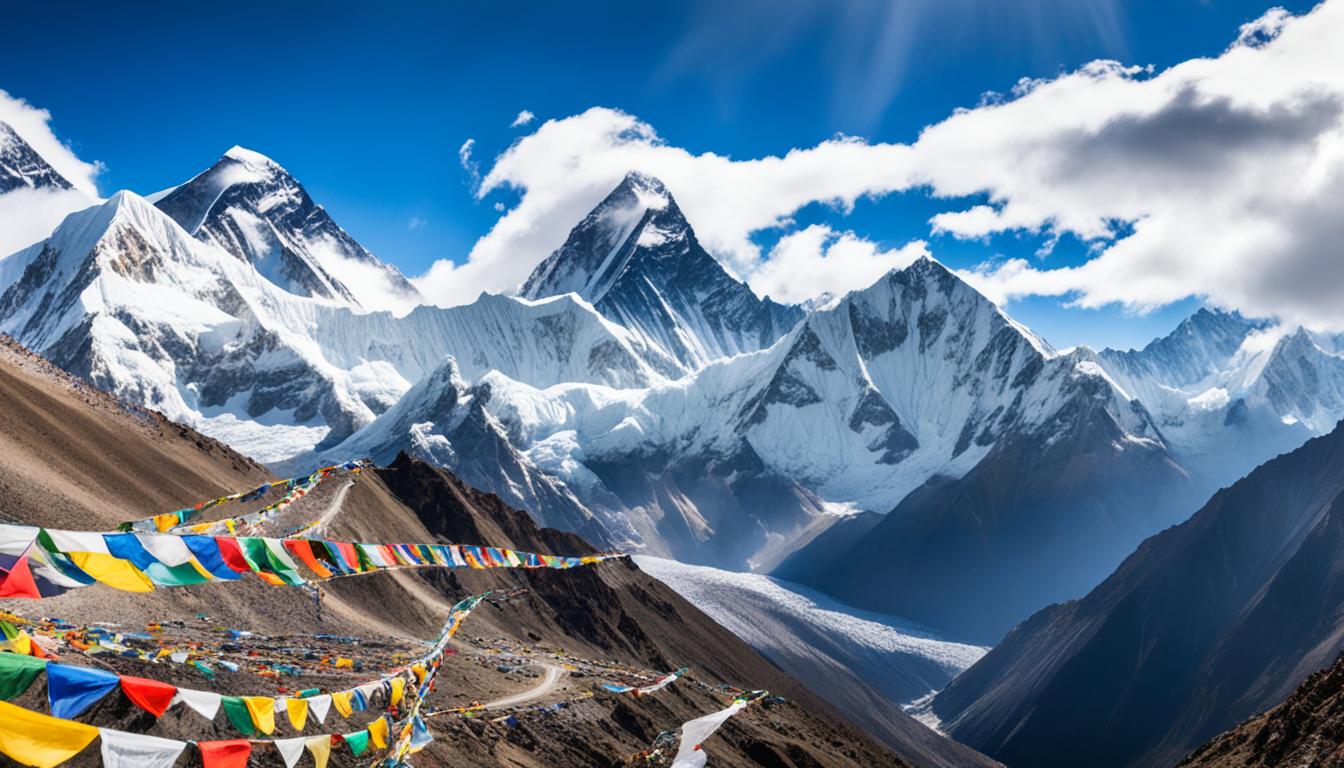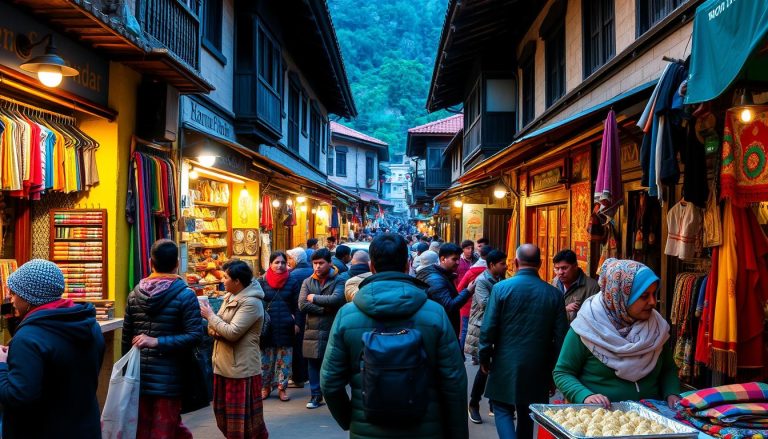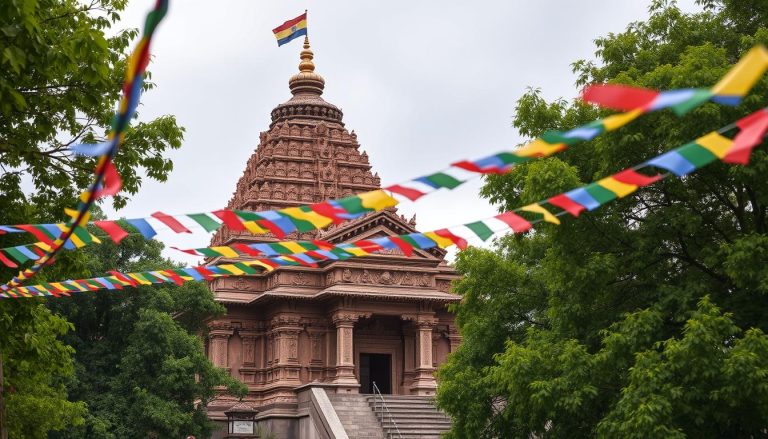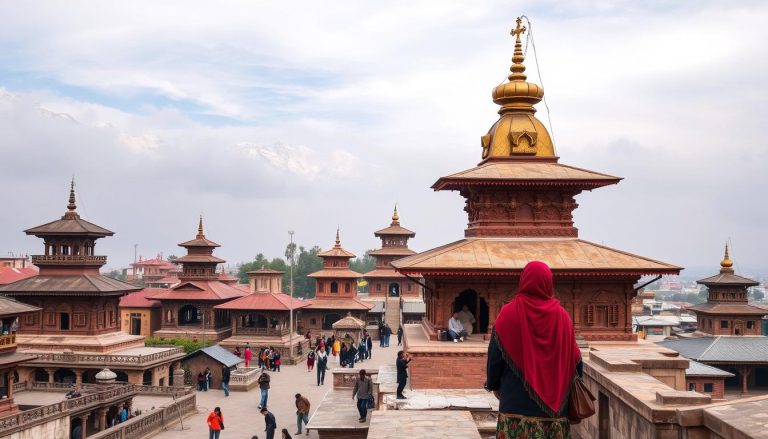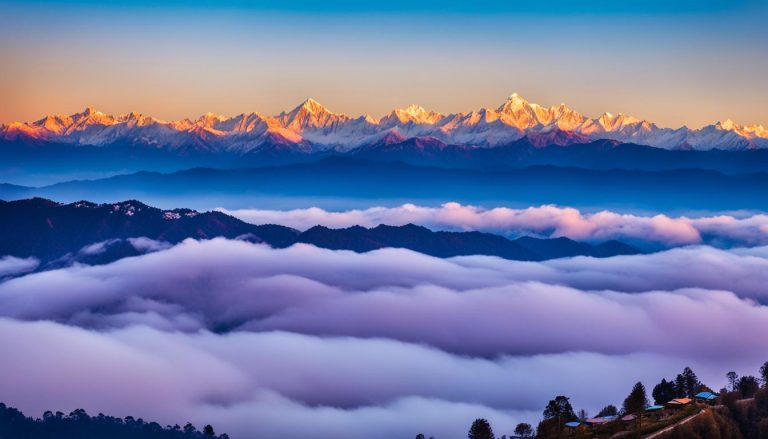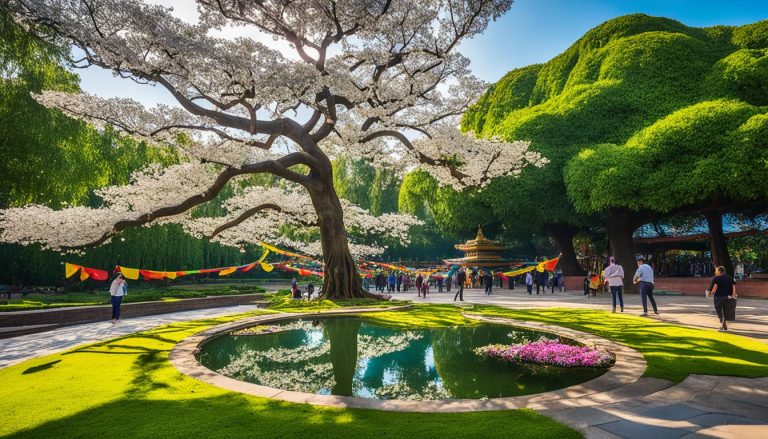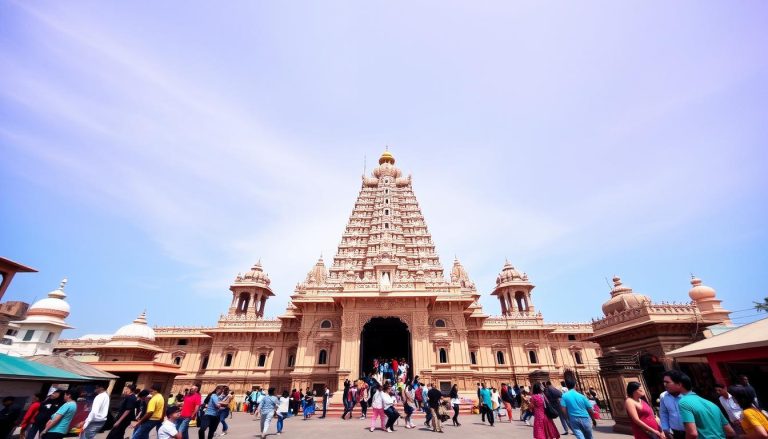Ever dreamed of seeing the top of the world, the majestic Himalayas? Then, Sagarmatha National Park in Nepal is a must-visit. This UNESCO World Heritage Site is full of thrilling adventures, stunning nature, and a deep cultural history. Whether it’s the famous Everest Base Camp Trek or climbing to the summit of Island Peak, this park has endless excitement for explorers. Now, let’s look at the top things to do in this Himalayan gem.
Key Takeaways
- Sagarmatha National Park boasts the tallest peak, Mount Everest (8,848 m), and includes breathtaking mountains, glaciers, and deep valleys.
- Famous for its awe-inspiring beauty, the Sherpa culture, and the best trekking and mountaineering chances, this park is a paradise for adventurers.
- It’s known for the legendary Everest Base Camp Trek and the chance to climb peaks like Island Peak, making it perfect for those seeking thrill.
- This guide will highlight the best activities in this Himalayan paradise, from must-trek routes to the top natural wonders and mountaineering trips.
- Visitors can see varied plants and animals, crystal-clear glacial lakes, and learn about efforts to keep this incredible place safe through tourism.
Unveiling the Majestic Sagarmatha National Park
Sagarmatha National Park is a treasure in the Nepalese Himalayas. It’s the home of Mount Everest, the highest peak in the world. Since 1976, it covers 1,148 square kilometers in eastern Nepal. This park ranges from 2,845 meters to 8,848 meters, showcasing stunning peaks, glaciers, and forests. In 1979, Sagarmatha National Park became a UNESCO World Heritage Site for its natural beauty and cultural importance.
Honoring the Sherpa Culture and Traditions
The heart of the Sagarmatha National Park is its connection with the Sherpa people. With about 6,000 Sherpas, they have their own culture for the high mountains. The park has 20 Sherpa villages known for their traditions and hospitality, like Namche Bazaar. During busy times, the Sherpas serve trekkers and share their mountain wisdom.
UNESCO World Heritage Site Since 1979
In 1979, Sagarmatha National Park was named a UNESCO World Heritage Site. It was the first park in Nepal to get this honor. The title recognizes its unmatched natural beauty, Everest, and the diverse Sherpa culture. This award has made the Everest region more popular for trekkers and climbers.
Trekking Adventures in the Himalayan Wonderland
The Everest Base Camp trek is a must-do for many adventurers. It’s the highlight of Sagarmatha National Park, Nepal. The journey begins in Lukla, called the “Gateway to Everest.” From there, it goes through the Khumbu region.
On this two-week adventure, you’ll move through places like the Sherpa town of Namche Bazaar. You’ll also go up the Imja Khola valley and see the Tengboche Monastery. Finally, you’ll reach places like Lobuche and Gorak Shep.
The pinnacle is reaching Everest Base Camp. And also seeing Mount Everest up close from Kala Patthar.
Gokyo Lakes: A Freshwater Paradise
The Gokyo Lakes offer a stunning break from the classic trek. They are a chain of six crystal-clear lakes at high altitudes. The journey to them starts in Namche Bazaar and goes through a mix of Rhododendron forests and open meadows.
Reaching the first lake lets you see amazing mountains like Cho-Oyu and Everest. Plus, you spot the Ngozumpa Glacier of Nepal’s biggest. This route, though a bit different, is equally breathtaking.
Conquering the Peaks: Mountaineering Expeditions
Begin an exciting adventure in Sagarmatha National Park of the Everest region. You’ll get the chance to climb challenging peaks. Whether it’s the technical climb of Island Peak or the thrilling Everest High Passes trek, this area is full of captivating mountaineering opportunities. You’ll find yourself drawn to the heart of the Himalayas.
Island Peak: A Trekking Summit Delight
Known as Imja Tse, Island Peak stands out in the Everest region. It goes up to 6,189 meters. It’s popular because it’s not as hard to climb as other peaks. This makes it great for people who are new to climbing mountains or have done it before.
Island Peak gives trekkers a high mountain challenge. They see amazing views of big Himalayan peaks, including Mount Everest. Even though it’s a tough climb, the summit gives a great feeling. It lets travelers enjoy climbing in the Everest region.
Everest High Passes: Braving the Thrilling Trails
The Everest High Passes trek is perfect for any experienced hiker looking for a big challenge. It includes crossing three high mountain passes and a visit to Everest Base Camp. Along the way, you’ll see memorable sights and famous peaks like Everest and Ama Dablam.
This journey is on less-traveled paths, making it tough but rewarding. It is a real test and connects you deeply with the Himalayas.
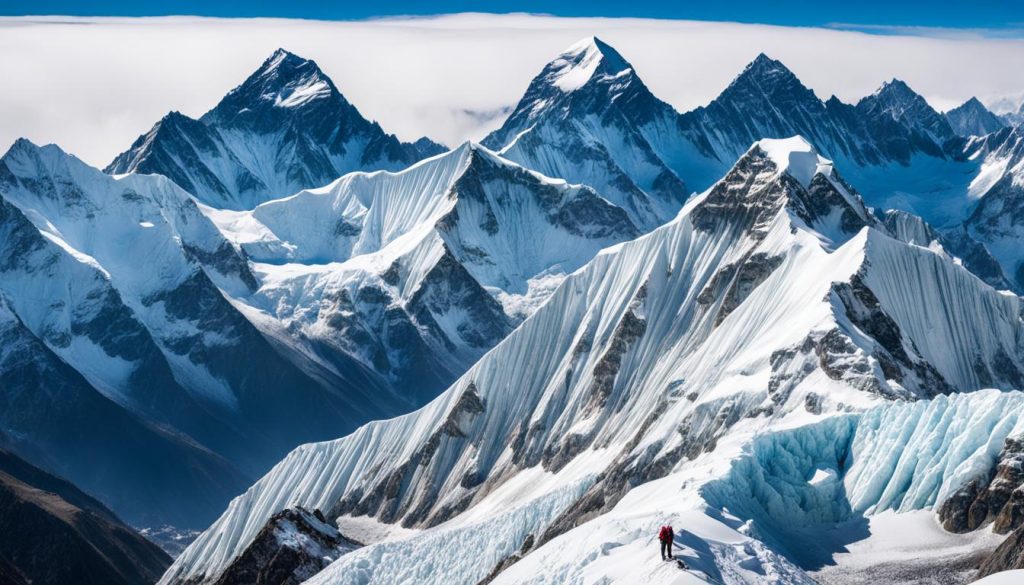
Sagarmatha National Park, Nepal: Best Things to Do - Top Picks
The Ama Dablam Base Camp trek is great for getting to know the Everest region up close. It follows the same path as the Everest Base Camp trek at first. You’ll pass through scenic Sherpa villages like Namche Bazaar, Tengboche, and Pangboche.
But then, it takes a different route towards the Ama Dablam mountain base camp. This journey lets you experience the Sherpa way of life closely. You’ll learn a lot about their rich culture. The best part is seeing the breathtaking Ama Dablam peak from the camp.
Ama Dablam Base Camp Trek: Sherpa Village Immersion
In the Everest region, the Khumbu Glacier is a stunning natural wonder. It’s 17 kilometers long and the world’s highest glacier at 4,900 meters. The glacier attracts many trekkers and climbers with its ice structures and amazing views of the Himalayas.
Walking on the glacier helps you understand its beauty and power. You’ll develop a greater love for Sagarmatha National Park’s incredible nature.
The Khumbu Glacier: A Frozen Marvel
Unraveling the Natural Treasures
Sagarmatha National Park is full of Himalayan flora and Himalayan fauna adapted to its tough high-altitude life. The lower parts are covered in forests. They have birch, juniper, blue pine, fir, and bright rhododendrons. Above, you find dwarf plants and shrubs. Finally, in the highest spots, only lichens and mosses grow. The park’s wildlife is amazing. It includes the Himalayan monal, red-billed chough, snow leopard, Himalayan black bear, and red panda. A key part of the park’s success is the Sherpa people. They have helped protect the environment and its animals for a long time.
Pristine Glacial Lakes and Rivers
Sagarmatha National Park also has beautiful glacial lakes and rivers. The Gokyo Lakes are one highlight. This chain of six lakes is a breathtaking sight. The largest lake, Thonak, is known for its colorful water. The park is also crossed by the Dudh Koshi River. This river feeds off the glaciers and nurtures the area’s plants and animals. The glacial lakes and rivers are key to supporting life in the park.
Getting There: Access to Sagarmatha National Park
The way to Sagarmatha National Park starts at Lukla’s Tenzing-Hillary Airport. Known as the “Gateway to Everest,” it sits at 2,860 meters. Lukla Airport is famous for its short runway and the big mountains around. It’s among the toughest places to land a plane.
You can fly from Kathmandu to Lukla in about 30 minutes. This flight gives you amazing views of the Himalayas. Once you land in Lukla, you’re ready to explore Sagarmatha National Park. Trekkers begin their journeys to places like Everest Base Camp or the Khumbu region.
Flights to Lukla: The Gateway to Everest
Flying to Lukla is the top choice for reaching Sagarmatha National Park. The flight shows off the grandeur of the Everest area. You’ll see the highest Himalayan peaks from the air. From Lukla’s Tenzing-Hillary Airport, trekkers head out to start their adventures. The famous Everest Base Camp trek and other top routes in the Khumbu region are easily accessible from here.
Overland Routes: Trekking from Jiri and Beyond
Aside from flying, adventurous travelers can get to Everest via land. A notable route is the trek from Jiri, about 170 kilometers from Kathmandu. This 10-day hike lets you gradually see and join the main trekking trails.
Other overland choices include starting from places like Tumlingtar, Salleri, or Phaplu. Each route offers its own special views and experiences. But as you trek, you’re on your way to the heart of Sagarmatha National Park.
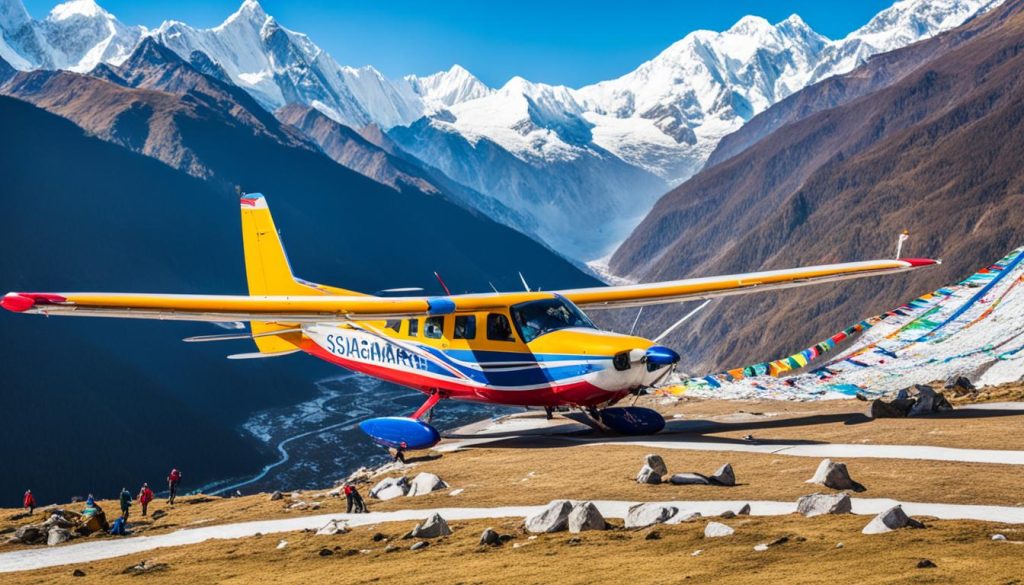
Best Time to Visit Sagarmatha National Park
The optimal time to visit Sagarmatha National Park is in the spring or autumn. This is from March to June and September to December. In these times, the weather is good for hiking or climbing.
Summer brings rain and clouds, while the winter is cold with snow. It’s important to know this before planning your visit. You want to make sure you’ll have great weather for your trip.
The best times for trekking are spring and autumn. The park is full of people then, all enjoying the trails and mountains. But, if you don’t mind the cold or the rain, visiting in other seasons can be special too. It’s quieter, and you get a different kind of experience.
When you visit Sagarmatha National Park is up to you. Think about what you like and your fitness. There’s something for everyone, whether you come in spring, autumn, or even winter. The park is a great place for people who love nature and adventure.
Sustainable Tourism and Conservation Efforts
Sagarmatha National Park is loved by trekkers and mountaineers but faces challenges. It must manage tourism well to protect its ecosystems. The Nepalese government, with help from locals and groups, works to make tourism sustainable. They control the number of visitors and handle waste carefully. They also support the Sherpa’s way of managing resources.
These steps are vital for protecting the park’s nature and culture. They ensure that Sagarmatha National Park remains beautiful for future visitors and nature lovers.
Preserving the Himalayan Ecosystem
The Himalayan ecosystem in the park is precious and must be kept safe. Efforts are made to lessen the harm from tourism, like managing waste and preventing damage to the park’s plants and animals. The government works with the Sherpa to keep the Everest region’s nature intact for the future.
Responsible Trekking and Climbing Practices
Those going to Sagarmatha National Park are urged to trek and climb responsibly. This means using set paths, keeping waste in check, and valuing the Sherpas’ way of life. Climbers must use natural, friendly camps and deal with waste properly.
By being thoughtful, visitors can help keep the Himalayan ecosystems safe. This ensures that adventure tourism in the Everest area can continue for a long time.
Accommodations and Amenities in Sagarmatha National Park
As you start your trek through Sagarmatha National Park, you’ll find teahouses and lodges along the way. They are placed just right, run by local Sherpa families. They provide important things like meals, hot drinks, and a place to sleep.
Teahouses and Lodges Along the Trails
In the Khumbu region of the park, the teahouses vary in size and what they offer. You can choose from sharing a room with others to having your own space. These places give you more than just a bed. They show you the warm Sherpa way of hosting guests.
Looking for a cozy stop or a start point for climbing? The teahouses and lodges are there for you. They make sure you’re taken care of. Plus, staying with them helps the environment and the Sherpa culture stay strong.
